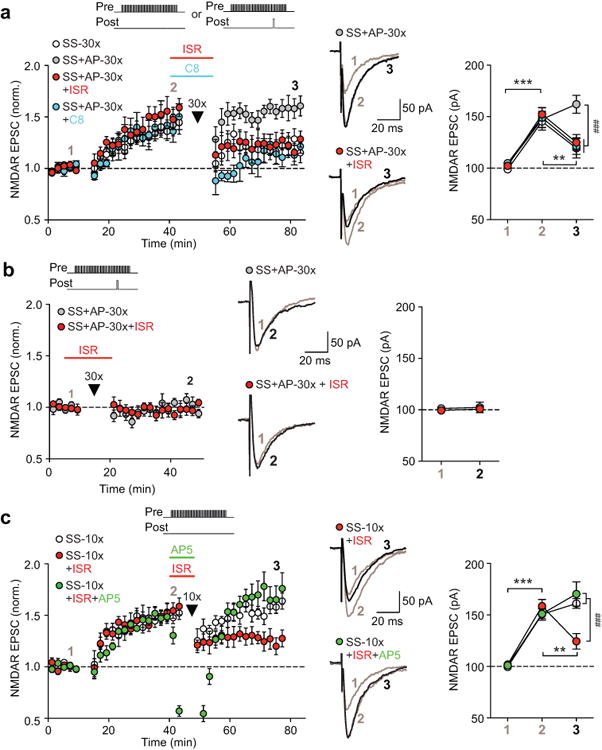Figure 3.

Isradipine and compound 8 promote reversal of previously induced NMDAR LTP. (a) After LTP induction and its development, LTP reversal protocol consisting of 1) sustained synaptic stimulation alone or 2) synaptic stimulation paired with a single AP was repeatedly delivered (30 times; arrowhead). In the third and fourth groups, the latter protocol (“SS+AP-30×”) was delivered in the presence of isradipine (ISR) or compound 8 (C8). (b) The “SS+AP-30×” protocol was delivered in control solution or in isradipine without prior LTP induction. (c) LTP reversal protocol consisting of synaptic stimulation alone was repeatedly delivered (10 times) in control solution, in isradipine, or in isradipine and AP5 (5 μM; produced 83 ± 4% peak inhibition of potentiated EPSCs, n = 6 cells). Summary time graphs of these experiments are shown on the left, while graphs depicting average EPSC amplitude during baseline, after LTP [except for (b)], and following delivery of LTP reversal protocol are shown on the right [(a) F6,40 = 4.85, p < 0.001, n = 5–7 cells/group; (b) F1,10 = 0.01, p = 0.94, n = 6 cells/group; (c) F4,32 = 10.49, p < 0.001, n = 6–7 cells/group; mixed two-way ANOVA). Example traces for the experiments indicated are shown in the middle. Synaptic stimulation intensity was adjusted to evoke ∼100 pA baseline EPSCs in each cell; thus the degree of synaptic facilitation of IK(Ca) was similar in different groups (Supplementary Figures S8d-f). **p < 0.01, ***p < 0.001 between two LTP stages; ###p < 0.001 between groups (Bonferroni post hoc test).
